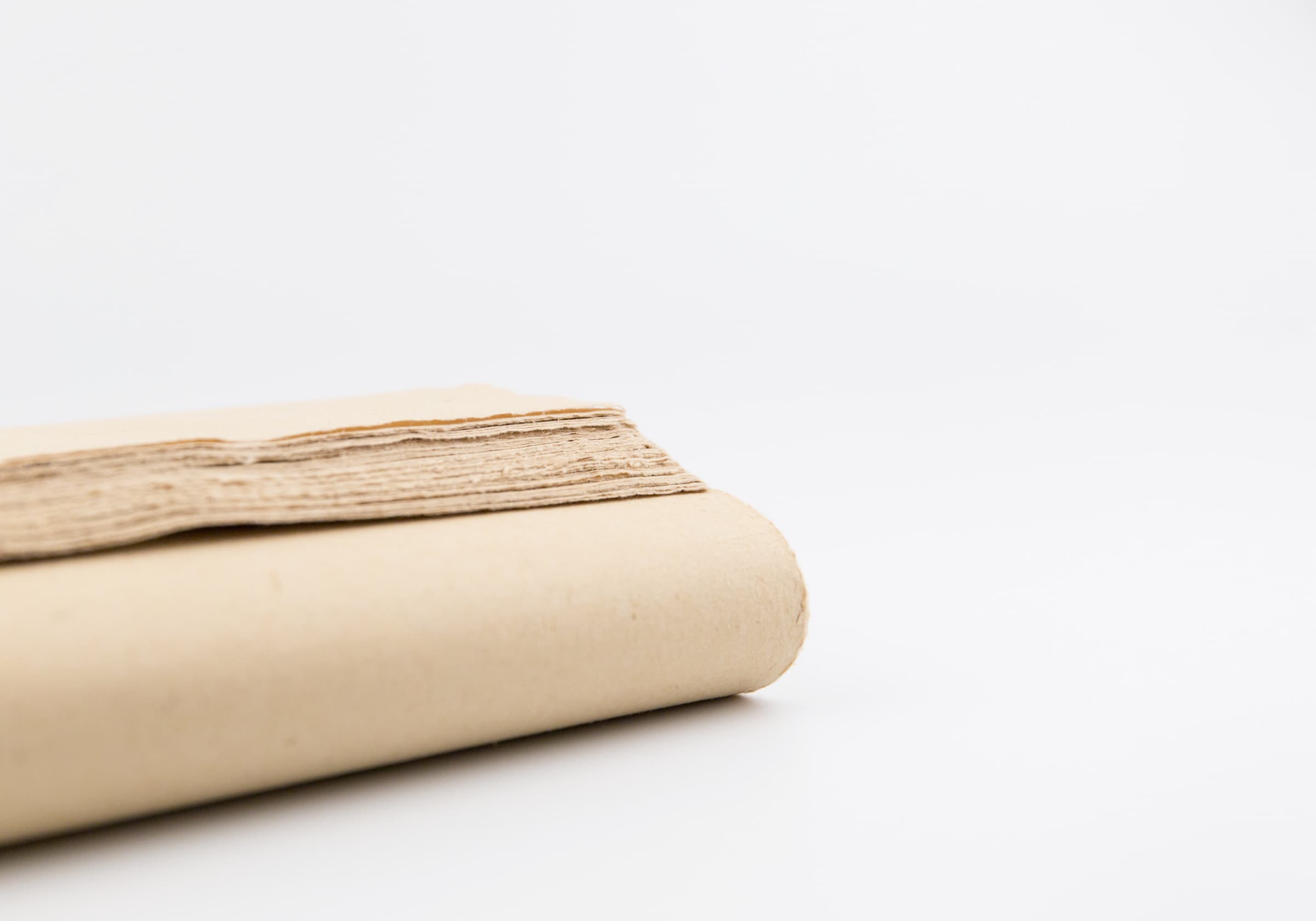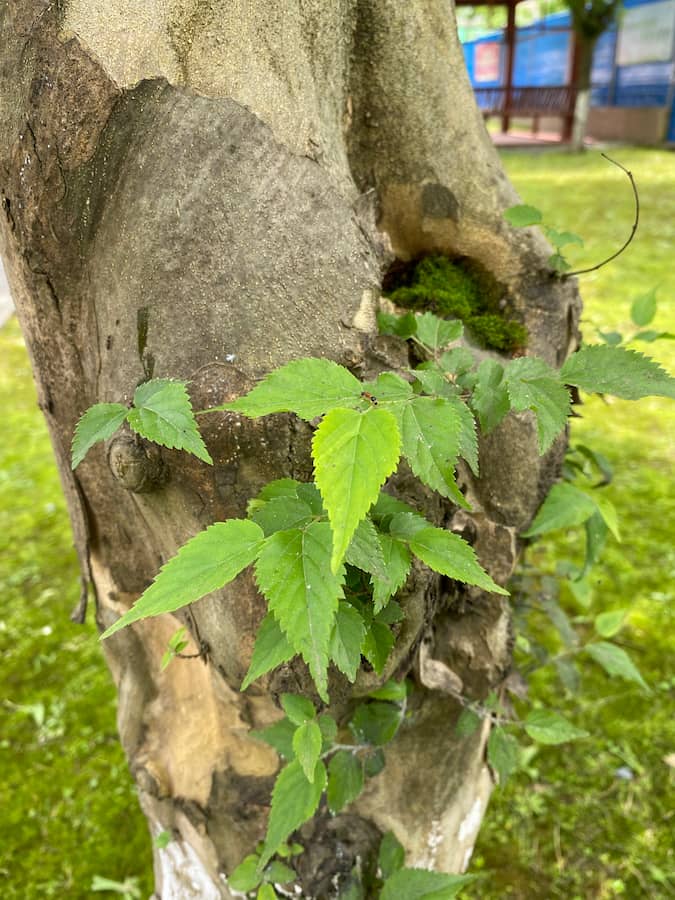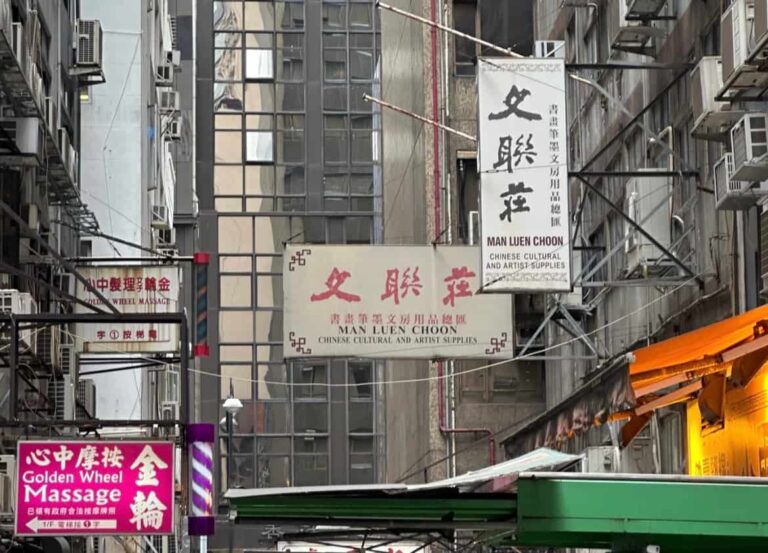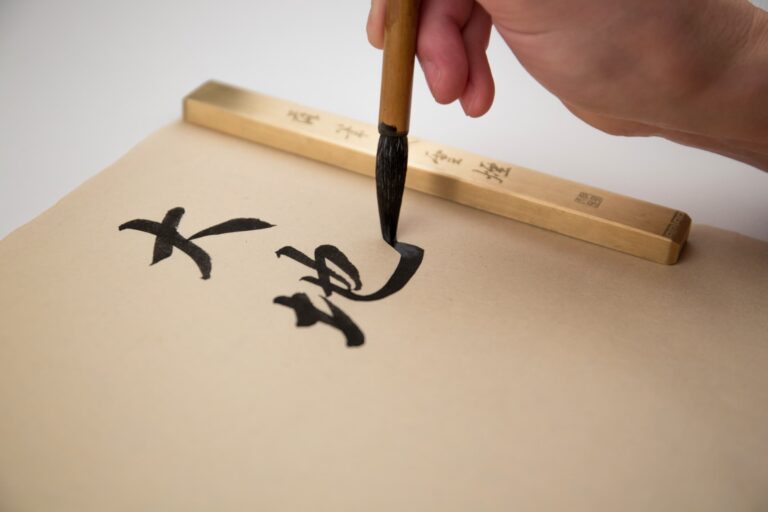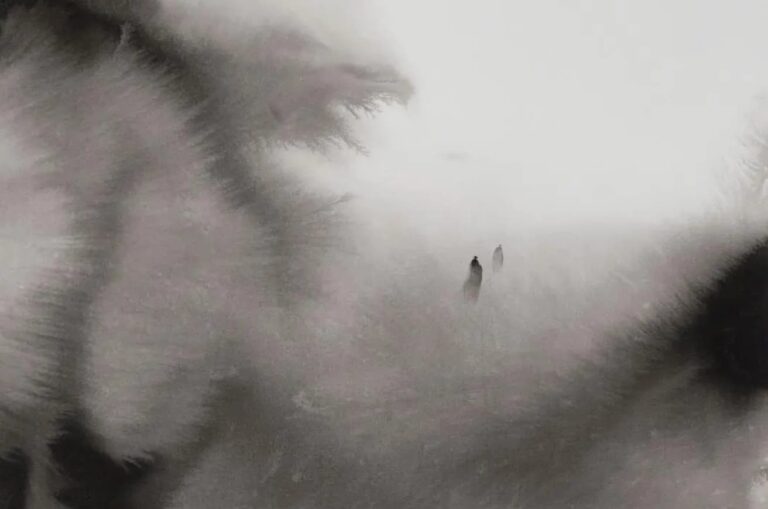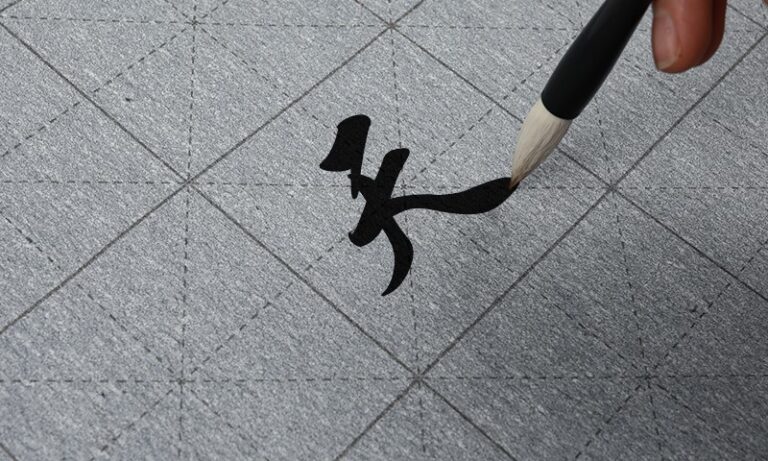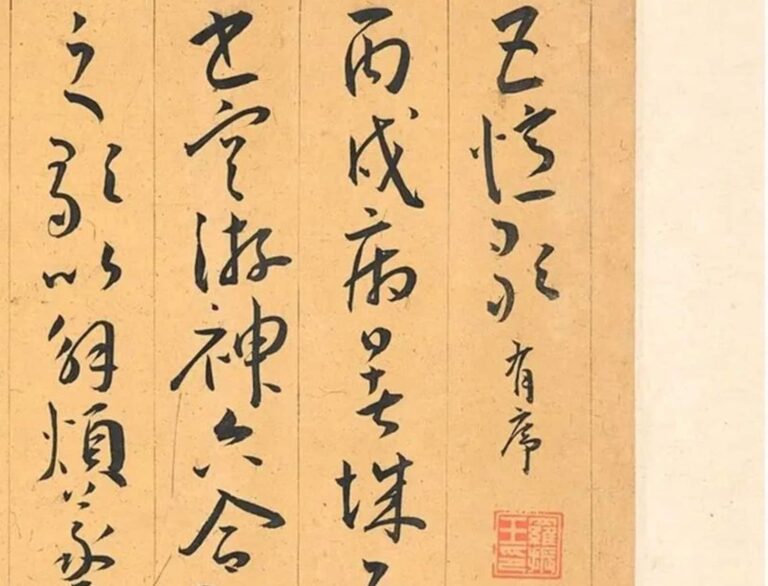Maobian Paper Guide: What Is It and How to Choose Quality Paper
For friends who are just starting to learn Chinese calligraphy, choosing the right paper can be confusing. Some people might have heard that Maobian paper is good for beginners, but what exactly is Maobian paper? How do you select quality Maobian paper? Today, Qi Ming combines insights from classical teachers’ discussions about Maobian paper to share some knowledge about this traditional paper.
What Is Maobian Paper?
As Qi Ming mentioned in a previous article “Best Paper Types for Chinese Calligraphy Beginners – Complete Guide,” Maobian paper is worth understanding.
Maobian paper is a light yellow paper made from bamboo fiber. It’s important to note that it must be made from bamboo fiber. Historical records show that “in the late Ming Dynasty, Jiangxi Province produced bamboo paper that was fine in texture, thin and soft, light yellow in color, with no water resistance but excellent ink absorption properties. It was suitable for both writing and printing ancient books.”
The name comes from an interesting story. During the Ming Dynasty, there was a famous book collector named Mao Jin who loved books deeply. He preferred using bamboo paper for printing books and once ordered large quantities of slightly thicker bamboo paper from Jiangxi Province. He would stamp a seal with the character “Mao” in ancient script on the paper edges. This is why people started calling this type of paper “Maobian paper” (Mao’s edge paper), and the name has continued to this day.
How to Choose Quality Maobian Paper
Here we mainly reference classical teachers’ writings with our own interpretation for your reference.
First: Check the Material
When selecting Maobian paper, first look at the material. This involves two aspects: authenticity and quality.
Authenticity means that some “Maobian paper” is not made from bamboo pulp, or not entirely from bamboo pulp. Technically, paper that isn’t pure bamboo pulp shouldn’t be called Maobian paper.
Common fake materials include:
1. Straw Pulp – This is the same material used to make cardboard. Maobian paper with too much straw pulp will have a dark yellow color and very short fibers with no tensile strength (you can test this by tearing off a corner). Straw pulp comes in two types: virgin straw pulp and recycled straw pulp. Virgin straw pulp is finer and doesn’t show clumps, while recycled straw pulp may show lumps if not properly processed.
2. Wood Pulp – This is the material used for making printing paper. Too much wood pulp makes Maobian paper turn white. What’s the standard color? It’s simple – the natural color of bamboo (with the green skin removed) is the standard color for Maobian paper. Recycled wood pulp is hard to break down completely, so many Maobian papers have small white spots – this is a typical characteristic of low-quality Maobian paper that’s common in the market.

For example, this low-quality Maobian paper has many small white spots.
Writing Performance Issues: Maobian paper mixed with wood pulp or straw pulp tends to cause ink bleeding, making it unsuitable for writing precise strokes. Additionally, the ink doesn’t settle properly on mixed-pulp paper – the color tends to look gray and appears to float on the surface.
Most importantly, grass fibers and wood fibers are less elastic than bamboo fibers. This means that Maobian paper mixed with wood or straw pulp doesn’t write smoothly – it feels sluggish and frustrating to use.
Material Quality refers to whether the bamboo pulp comes from old or young bamboo. Paper made from old bamboo is rougher. For example, in a previous Maobian paper test post, the paper was made from old bamboo and was actually funeral paper.
Young bamboo is more delicate. Traditional Maobian paper was made from young bamboo and used for printing as well as calligraphy and painting. Good young bamboo paper has a smooth, glossy surface. This is supposedly due to thin-walled cells and other components beyond just bamboo fiber, though the technical details are beyond my understanding.
Second: Check the Craftsmanship
Machine-made Maobian paper dominates the current market. While I’m not entirely clear on the technical reasons why it’s not as good, I sometimes use the smoother side of machine-made Maobian paper, jokingly calling it “poor man’s Chengxin Tang paper.”
(Qi Ming’s Note: Classical teacher refers to Chengxin Tang paper here. Chengxin Tang paper was a type of Xuan paper produced by Han Chinese workers in the Huizhou region during the Five Dynasties and Ten Kingdoms period of Southern Tang. Due to its excellent quality, it was considered the best paper in Han Chinese papermaking history. It was one of the three treasures of Southern Tang scholarly supplies, famous for being thin as membrane, solid as jade, and fine and smooth.)
However, for those who are more particular about quality, handmade Maobian paper is still preferred. Most machine-made Maobian paper has one particularly smooth side, which can help distinguish it from handmade paper. But this standard is becoming less reliable as machine processes improve and try to mimic handmade paper.
(Qi Ming’s Note: Regarding whether to use the rough or smooth side of Maobian paper, Qi Ming previously conducted a poll. You can refer to “Which Side of Maobian Paper Should You Use for Calligraphy Practice? Smooth or Rough Side?”)
Another difference between handmade and machine-made Maobian paper is that handmade paper has clear screen marks. The clearer and finer the screen marks, the better the papermaking process and materials.

Traditional handmade papermaking requires bamboo screens. As they say, “Papermaking requires screens; only with screens can paper be made.”
According to records, old papermaking sometimes produced half-finger screen marks (about half a centimeter apart) – these were considered top quality. One-finger screen marks are also rare and considered high quality. Current screen marks are mostly around two centimeters apart, which is already considered quite good. Screen marks that are coarse and unclear are inferior quality.
Currently, machine-made Maobian paper also tries to imitate handmade screen marks, but when held up to light, they usually appear blurred.
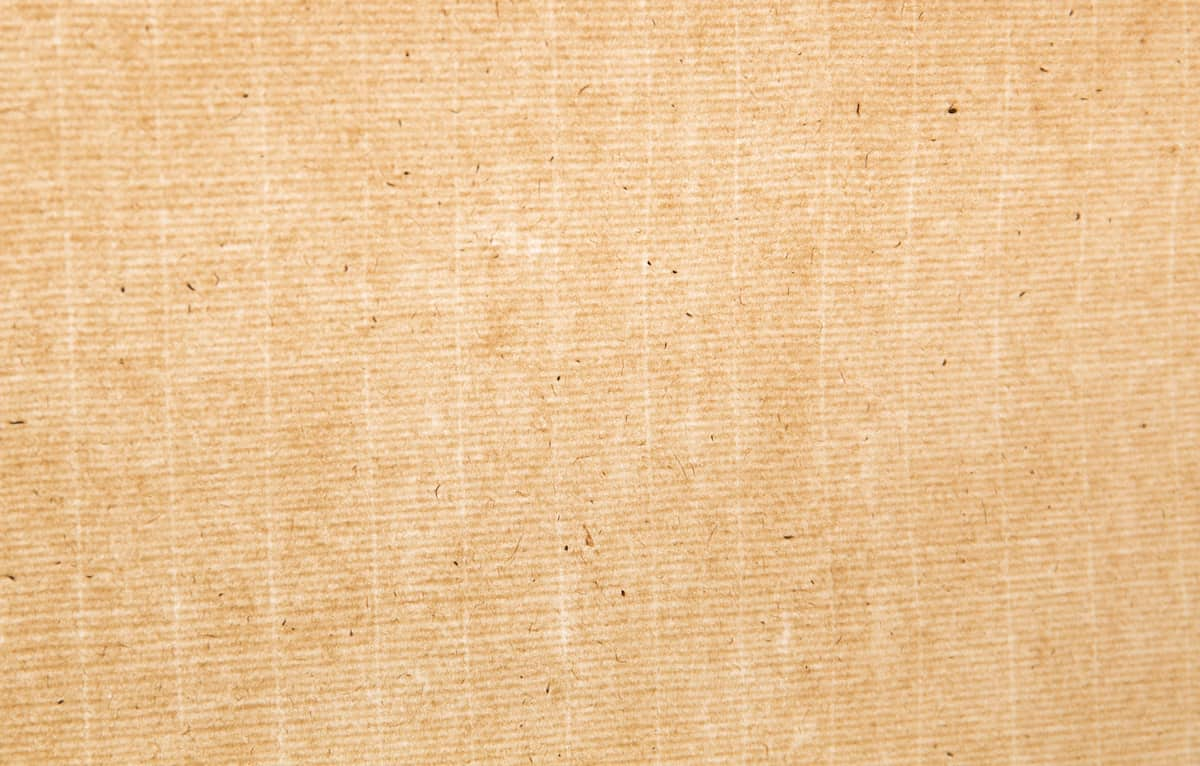
This is pure handmade Maobian paper with clear screen marks (Image from: Qi Ming Wen Fang)
If you have some experience, testing is best, but immediate judgment can be difficult. Comparison is needed for conclusions. If you don’t have good Maobian paper on hand, or haven’t used authentic handmade Maobian paper in a long time, it’s easy to misjudge.
Final Recommendations
If you’re interested in learning about the differences between Maobian paper and Yuanshu paper, or want to buy good Maobian paper that doesn’t bleed ink or wrinkle, you can read Qi Ming’s previously published “Best Paper Types for Chinese Calligraphy Beginners – Complete Guide.”
Here are some other articles about the Four Treasures of the Study that might help you understand traditional Chinese scholarly supplies and begin systematic calligraphy learning.
Brushes: Top 10 Chinese Calligraphy Brushes: The Ultimate Guide to Selection and Care
Ink: The 5 Best Chinese Ink Brands: Properties, Selection Criteria & Care Guide
Paper: Top 10 Chinese Xuan Paper Brands: Selection Guide & Care Tips
Ink Stones: What are the four famous inkstones and Top Ten Inkstones

